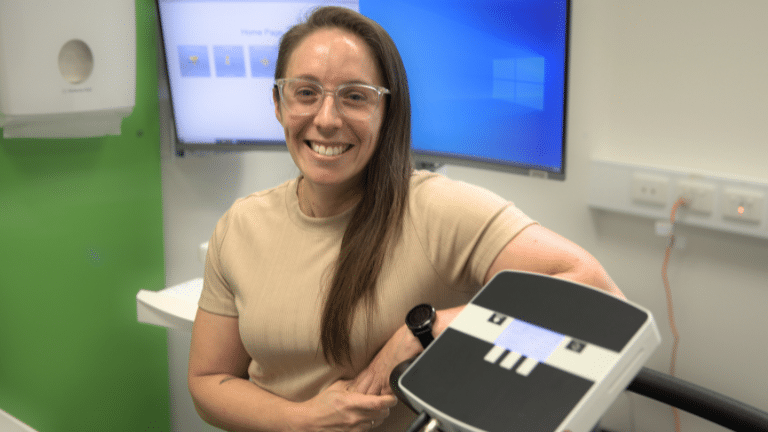
It’s understandable that people with chronic respiratory disease struggle to be physically active. The problem is that physical activity is recommended for people with chronic respiratory disease because it improves not only their symptoms but their overall quality of life. It’s a double bind that PhD researcher Paola Urroz Guerrero is tackling in her work.

It’s understandable that people with chronic respiratory disease struggle to be physically active. The problem is that physical activity is recommended for people with chronic respiratory disease because it improves not only their symptoms but their overall quality of life. It’s a double bind that PhD researcher Paola Urroz Guerrero is tackling in her work.
Paola has just published a study using a concept called ‘Can Do, Do Do’ in the European Respiratory Journal Open Research.
Paola says, “A lot of people with chronic respiratory disease don’t meet the recommended amount of 150 minutes of moderate to vigorous physical activity each week. So, I want to understand why this is and come up with practical interventions to support people with chronic respiratory disease to be active.”
The study looked at a total of 281 participants (bronchiectasis n=60, severe asthma n=93, COPD n=70 and control n=58) who completed assessments to characterise physical capacity as ‘can do’ versus ‘can’t do’ (preserved physical capacity vs impaired physical capacity)
and physical activity as ‘do do’ versus ‘don’t do’ (meets the physical activity recommendations vs doesn’t meet the physical activity recommendations).
Many people in the study probably didn’t do the recommended amount of physical activity because they didn’t have the physical capacity to do so. People with chronic respiratory disease have impaired lung function, breathlessness and comorbidities that impair the physical capacity and ability to be active.
An interesting finding was that people with chronic respiratory disease were spending up to 10 hours per day sedentary. This highlights a potential area for intervention.
Paola says she wants to try something different, “a step-wise approach rather than an elevator approach”.
Beyond physical activity, she wants to explore focusing on sedentary behaviour to provide people with chronic respiratory disease an alternative and feasible pathway to optimising their overall movement behaviours (combination of physical activity and sedentary behaviour). She wants to encourage people to think about the whole day when it comes to movement, not just structured exercise.
“People perceive exercise as the only purposeful option and then might think, ‘Well, that’s not within my capabilities’. I want to challenge that thinking and start at the beginning. There are really two areas; breaking up long periods of sedentariness with standing up regularly, and then working towards being able to do sustained physical activity. It’s about incrementally building physical activity of any intensity on one hand, while focusing on not being sedentary in the first instance,” says Paola.
The message is simply that to move – even a little bit by standing up more often – is a positive step to take that will build towards improved movement behaviours.
HMRI would like to acknowledge the Traditional Custodians of the land on which we work and live, the Awabakal and Worimi peoples, and pay our respects to Elders past and present. We recognise and respect their cultural heritage and beliefs and their continued connection to their land.
Hunter Medical Research Institute
We’re taking healthy further.
Locked Bag 1000
New Lambton
NSW, Australia, 2305


This site is protected by reCAPTCHA and the Google Privacy Policy and Terms of Service apply.
Copyright © 2024 Hunter Medical Research Institute | ABN: 27 081 436 919
Site by Marlin Communications
